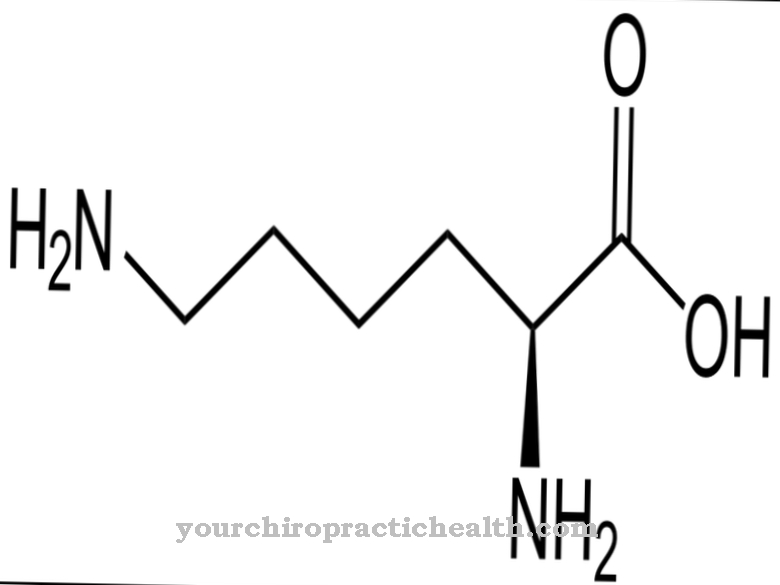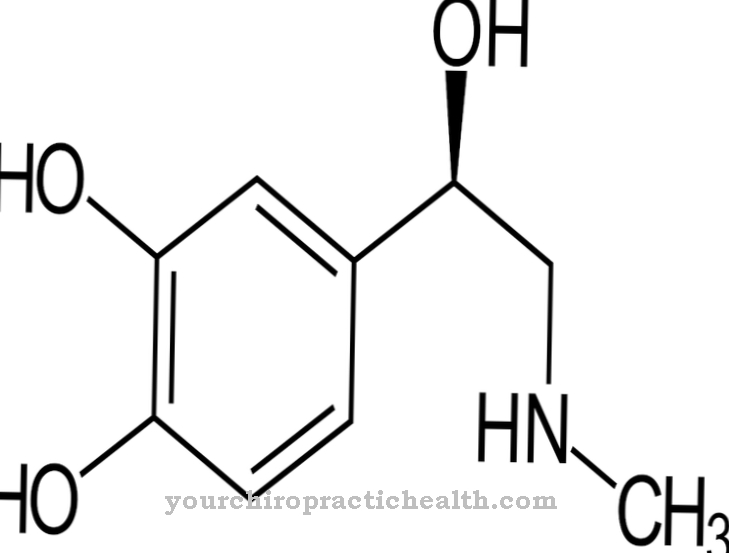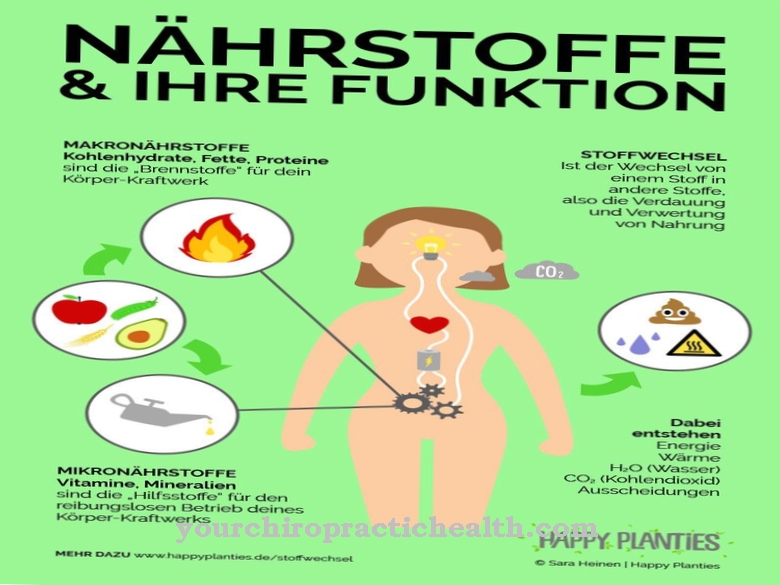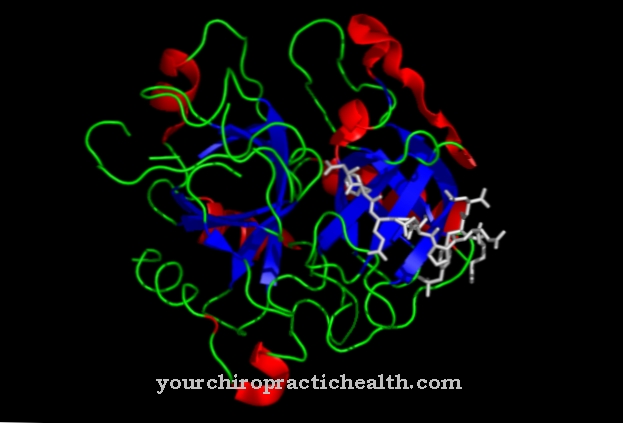Albumins are blood proteins that belong to the group of globular proteins. Its most important task in the human body is to maintain colloid osmotic pressure.
What is albumin
Albumins are proteins that belong to the group of plasma proteins. Human albumins are also known as human albumins. The blood proteins have a molecular mass of around 66,000 atomic units (Da). Each albumin consists of almost 600 amino acids.
The amino acid cysteine is particularly common, so albumins have a very high sulfur content. The blood proteins are soluble in water. They have a relatively high binding capacity for water. This is 18 milliliters per gram. Because of their water-binding properties, blood proteins play an important role in maintaining colloid osmotic pressure.
Function, effect & tasks
Albumin is the protein with the highest concentration in the blood. It thus ensures the colloid osmotic pressure of the blood plasma. Colloid osmotic pressure is the pressure exerted by macromolecules in a solution. The level of pressure is determined by the number of dissolved particles, in this case by the number of proteins.
The colloid osmotic pressure keeps the fluid in the blood vessels. When the pressure in the blood drops, fluid enters the interstitium, causing edema to form. But albumins also function as transport proteins. They bind various small-molecule and water-insoluble compounds and transport them to their sites of action via the bloodstream. The small molecular compounds that are transported with albumins include calcium, the hormone progesterone, free fatty acids, the bile pigment bilirubin, magnesium and drugs.
Albumins have ampholytic properties. They can absorb hydrogen ions and thus stabilize the pH value of the blood. In contrast to the buffer capacities of hydrogen carbonate and hemoglobin, the buffer function of the albumins plays a subordinate role.
Education, occurrence, properties & optimal values
Albumins are made in the liver. The body's largest digestive gland produces around twelve grams of albumins per day. A healthy person weighing 70 kilograms has an average of 250 to 300 grams of albumins. More than 50 percent of the albumins are in the tissue and thus outside the blood vessels. Only 40 percent circulate within the blood vessels in dissolved form in the blood plasma.
In addition to albumin, there are other proteins in the blood. These plasma proteins are also known as globulins. However, they are outnumbered in terms of quantity. 60 percent of all blood proteins are albumins. This corresponds to an amount of 3.5 to 4.5 grams per deciliter. A healthy person should therefore have 35 to 62 grams of albumins per liter of blood. The reference values and the determined values can, however, differ greatly from laboratory to laboratory.
Individual laboratory values are also rarely meaningful, so that the albumin value should always be viewed by a doctor in connection with other blood values. The albumin level is usually measured in the blood. Only a few proteins should be found in the urine. The maximum value is 30 milligrams within 24 hours. An increased concentration of albumin in the urine can indicate kidney damage.
Diseases & Disorders
The kidney corpuscles have a so-called fenestrated membrane. Small molecules such as minerals, ions or urinary substances pass through the small gaps in the cell wall of the kidney corpuscles. The windows are too small for proteins and also for red blood cells. They therefore normally remain in the blood and only rarely find their way into the urine in small concentrations.
An increased concentration of albumin in the urine is an indication of damage to the kidneys. The walls of the kidney corpuscles are so damaged that larger molecules also find their way into the urine. Albuminuria, i.e. the appearance of albumins in the blood, is found, for example, in diabetic nephropathy. Diabetic nephropathy is a kidney disease that occurs as a complication of diabetes mellitus. The increased protein excretion in the urine also leads to a reduction in blood proteins. As a result, the colloid-osmotic pressure in the blood vessels can no longer be maintained. The osmolarity in the vascular bed decreases and the fluid from the blood vessels is shifted into the cell spaces. This leads to water retention in the tissue (edema) and a reduced circulating blood volume.
The edema is particularly evident on the legs and eyelids. The combination of increased protein in the urine, decreased protein in the blood, increased blood lipid levels and edema is also known as nephrotic syndrome. The nephrotic syndrome occurs not only in diabetic nephropathy, but also in glomerulonephritis, sarcoid and acute interstitial nephritis.
A deficiency of albumins in the blood serum is called hypoalbuminemia. As just described, this can be caused by proteinuria. The deficiency can also be caused by insufficient production. The most common causes of this are liver diseases such as cirrhosis or hepatitis. A deficiency of albumins in the blood therefore also serves as a marker for a synthesis defect in the liver. The albumin deficiency is also involved in the development of ascites. This is where free fluid collects in the abdominal cavity. Ascites is a typical symptom of advanced liver cirrhosis.
Hyperalbuminemia, i.e. an increase in the albumin levels in the blood serum, is of little diagnostic relevance. Elevated albumin levels are actually only found in severe dehydration due to insufficient drinking or due to pronounced loss of fluid.




.jpg)








.jpg)

.jpg)
.jpg)











.jpg)